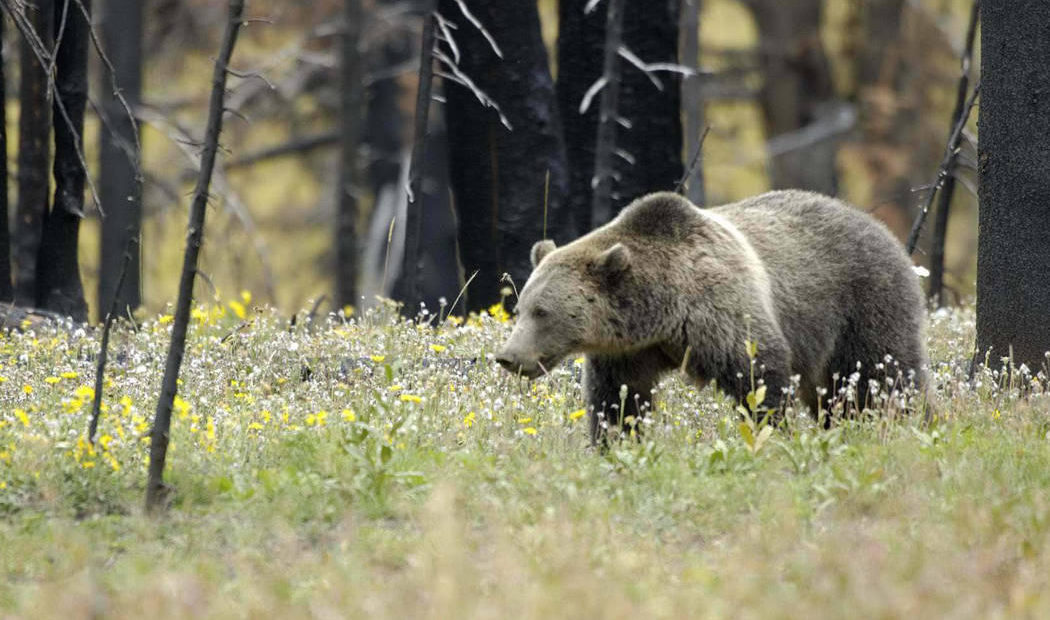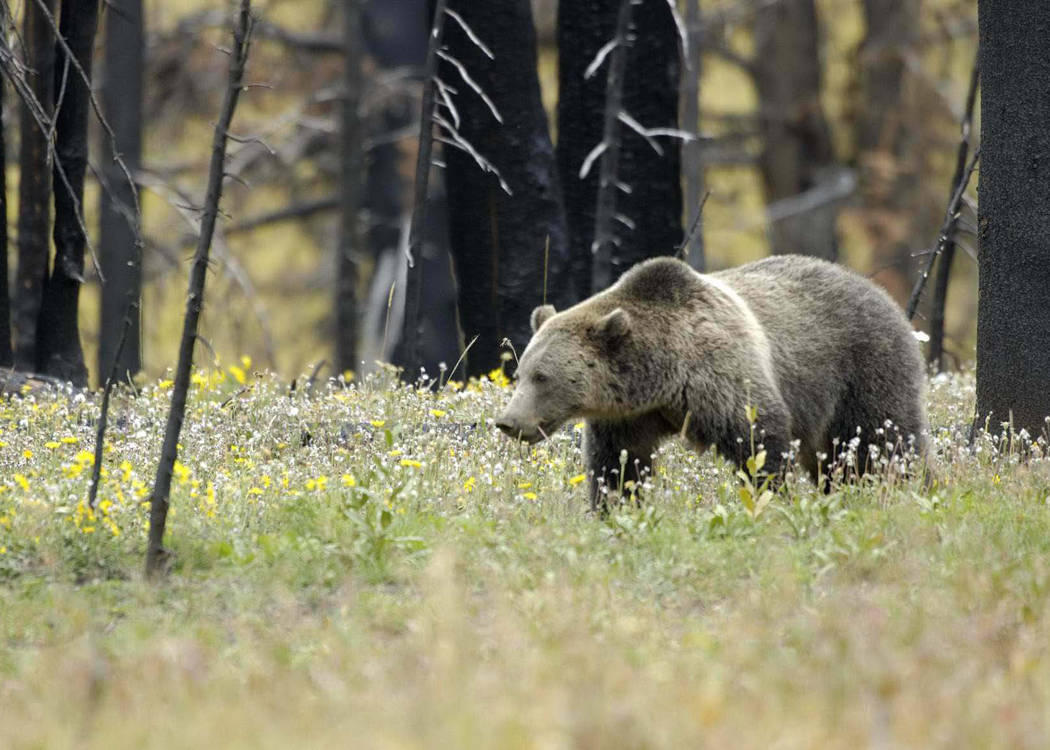
Federal officials want your thoughts on grizzly reintroduction plans
Listen
(Runtime 0:57)
Read
Federal officials are considering several possibilities to bring grizzly bears to Washington’s North Cascades. These agencies would like to hear people’s thoughts on how to move forward.
Grizzly bears played an important part of the North Cascades ecosystem for thousands of years. Now, biologists say only a handful of grizzly bears likely live there. So few that biologists consider the bears functionally extinct in the area – unless more grizzlies aren’t brought in from places like Montana, Wyoming, or interior British Columbia.
The bears were listed as threatened in the lower 48 states in 1975, but lots of areas have seen grizzlies recover well, like those in the Greater Yellowstone Ecosystem. That’s different for most of Washington. (There are populations of the bears in the Selkirk Mountains, which span the northeastern part of the state.)
The North Cascades Ecosystem is cut off from other areas with a lot of grizzly bears. It also spans from the United States into Canada. Recent models have found the U.S. side of the ecosystem could support around 280 grizzly bears.
The last time a grizzly bear was confirmed on the U.S. side of the border was in 1996.
The U.S. Fish and Wildlife Service and the National Parks Service have released a draft environmental impact statement that considers several options for grizzlies in the area. One option is to do nothing.
A second option would restore around 200 grizzlies to the area and give them Endangered Species Act protections.
The preferred option would make North Cascades grizzlies an experimental population, called a10(j) designation. That would give more flexibility in managing bears that cause conflicts. The 10(j) rule has its own comment period. According to the plan, the designation would help “promote social tolerance and human safety.”
“If this part of our natural heritage is restored, it should be done in a way that ensures communities, property and the animals can all coexist peacefully. A 10(j) experimental designation could provide the tools to do that,” said Hugh Morrison, U.S. Fish and Wildlife Service regional director.
Each of the plans that would bring grizzlies into the North Cascades would aim to release three to seven bears a year for five to 10 years. That would bring the initial population to 25 bears. According to the plans, it would take 60 to 100 years to reach the 200 bear goal.
The agencies would plan to bring mostly female bears, typically between 2- to 5-years-old, with no history of human conflicts.
A coalition of conservation groups and tribal representatives said in a news release that restoring grizzlies to the North Cascades would greatly benefit the ecosystem.
“The time has come for the grizzly bear to return to its habitat to take its place in the Indigenous ecosystem,” said Scott Schuyler, policy representative for the Upper Skagit Tribe, whose territory lies within the proposed recovery zone. “The Upper Skagit successfully coexisted with grizzly bears for thousands of years, and we should once more.”
However, U.S. Rep. Dan Newhouse (R-Wash.) has long argued against reintroducing grizzly bears to the North Cascades, often saying his constituents haven’t been heard during this process.
“Time and again, our communities have spoken to express staunch opposition to the introduction of these apex predators, which would be detrimental to our families, wildlife and livestock alike,” Newhouse said in a statement.
The draft environmental impact statement comment period closes Nov. 13. The proposed 10(j) rule will be available to comment on starting Sept. 29 and will close Nov. 13.
Earlier efforts to bring grizzlies to the area created lots of tension. In 2020, the Department of Interior abruptly stopped a similar process to bring grizzlies to the area.
















